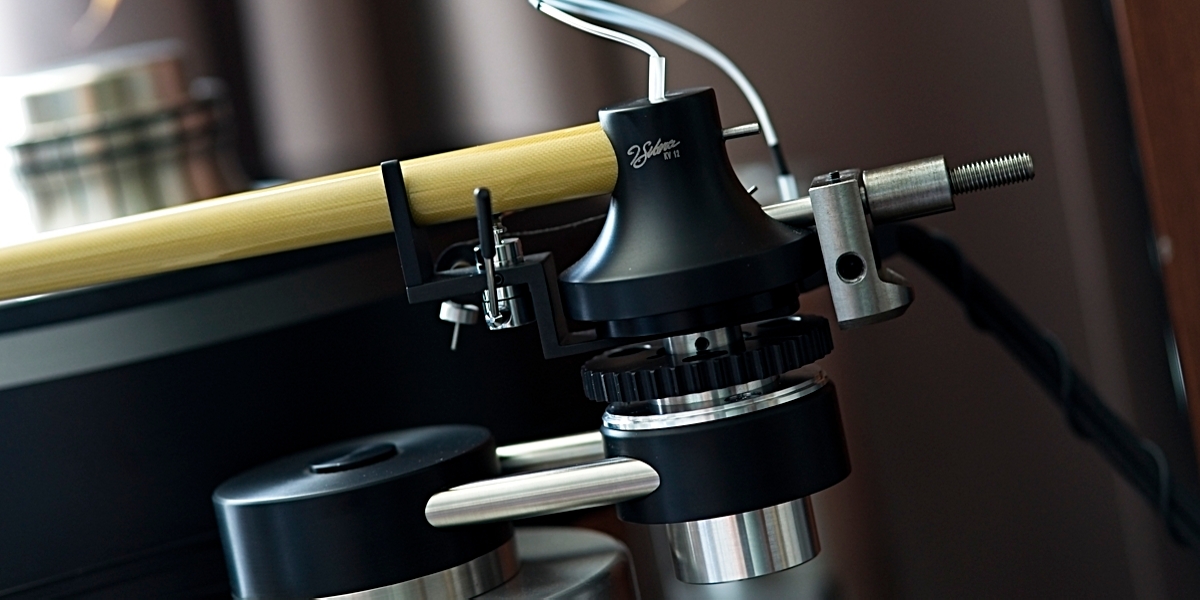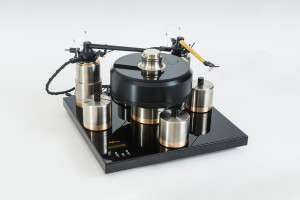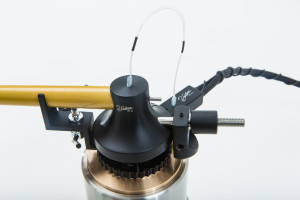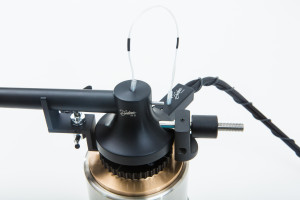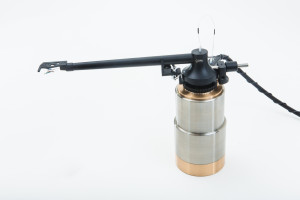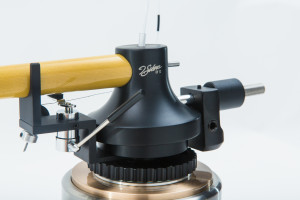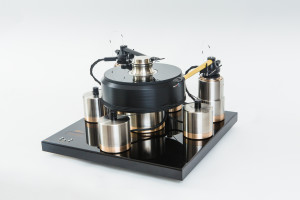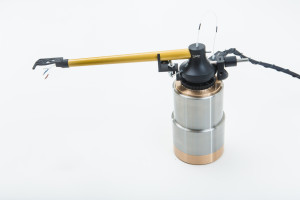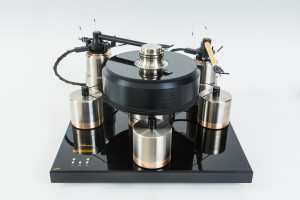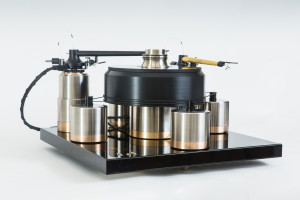Many vinyl records fans, me included, who visited Audio Video Show in Warsaw last November rushed to witness a presentation of a renown Polish turntable manufacturer, J.Sikora. Not because there was yet another deck to be revealed but the first ever (as far as I know) Kevlar tonearm. It was probably the most discussed vinyl record related product during and after this Show. Now it is time to present the world premiere review of the J.Sikora KV12 Tonearm.
Introduction
Ever since my first review of the J.Sikora Standard turntable some years ago I stayed in touch with Mr. Janusz Sikora, the owner and chief designer of this brand. I have been an analogue record fan ever since I was a kid, and the first encounter with J.Sikora deck ensured me that there finally was a truly high-end Polish deck available. So I had to have it. Some time after the review I could finally afford it and I ended up with the MAX version of this turntable that included the top of the line power supply normally offered for the flagship Reference deck. Instead of using one of Kuzma’s tonearms, that Mr. Sikora offered back then to many customers, I bought the Schroeder CB and installed my favorite AirTight PC3 cartridge in it. Later on we added yet another upgrade to my unit – an external controller was replaced with even more advanced one that is integrated to the base of the deck. It’s already been a few years and it never even crossed my mind to look for another deck. This setup went head-to-head with many even more expensive ones and it never failed. Sure, there were two outstanding cartridges I would trade my AirTight for – the Murasakin Sumile and Kondo IO-M , and the tonearm that also outperformed my Schroeder – the Acoustical Systems Aquilar , but they simply cost too much (for me). None of the decks/complete turntables I reviewed outperformed J.Sikora though, and only few came even close. It is perfectly made and finished, and the performance is as good as the other elements of the setup allow.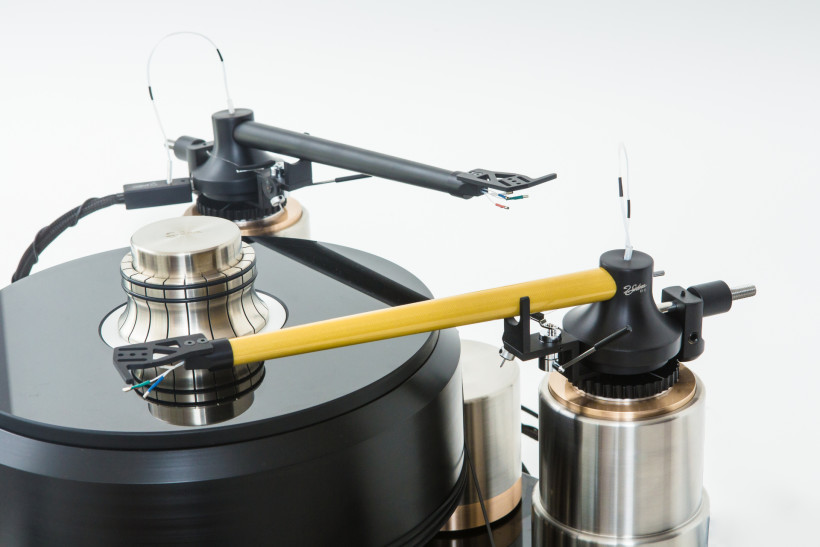 Some time last year, during one of conversations, Mr. Sikora broke very exciting news to me – he was working on his own tonearm. He didn’t tell me much at the time but knowing everything I did about him I was confident that it wouldn’t be just yet another arm, similar to dozens of others. I was certain it would surely be something very special. I was right. Maybe a month or two before the Audio Video Show 2018 in Warsaw I finally learned it was going to be a tonearm with tube made of Kevlar. „Normal” people when they hear „Kevlar” think about bulletproof vests. First thing that comes to most audiophiles’minds are probably yellow Kevlar drivers and B&W loudspeakers. But a tonearm? That was new. As far as I know and every man from our industry I talked to confirmed, Mr. Sikora was the first one to think about using this material for this purpose. Or at least he was the first who successfully acted on this idea and created the J.Sikora KV12 Tonearm.
Some time last year, during one of conversations, Mr. Sikora broke very exciting news to me – he was working on his own tonearm. He didn’t tell me much at the time but knowing everything I did about him I was confident that it wouldn’t be just yet another arm, similar to dozens of others. I was certain it would surely be something very special. I was right. Maybe a month or two before the Audio Video Show 2018 in Warsaw I finally learned it was going to be a tonearm with tube made of Kevlar. „Normal” people when they hear „Kevlar” think about bulletproof vests. First thing that comes to most audiophiles’minds are probably yellow Kevlar drivers and B&W loudspeakers. But a tonearm? That was new. As far as I know and every man from our industry I talked to confirmed, Mr. Sikora was the first one to think about using this material for this purpose. Or at least he was the first who successfully acted on this idea and created the J.Sikora KV12 Tonearm.
When I heard about it on the phone I was a bit sceptic at first. Mr. Sikora explained that it was a perfect material for this purpose – very light, yet rigid and resonance free. And obviously durable. The development process was very painful, as he told me. The idea was great, on paper it looked fantastic but when it came to actually making the tube for this arm… well, since kids might read it let me just say, that Mr. Sikora, who is a very nice, calm man, lost it many times and some words I heard from him regarding the production process definitely can’t be published here. But he overcame all the challenges and as a result we could see, touch and listen to the prototype unit during the Show. Sure, no show is a place for proper audio product evaluation. And since it was a working prototype it was also obvious that make & finish were not perfect. Yet, I was delighted and so were many people from around the world who crowded the Sikora’s room and asked million questions including they key ones: how much does it costs and when will it be available. It seemed that the J.Sikora company prepared yet another remarkable and unique product bound to succeed. The challenging, time-consuming production process indicated though, that supply could be somewhat limited, particularly at first. The answer to the first of these two questions was (at the time): we don’t know yet. The answer to the other: we hope to have first units ready in January. After the Show Mr. Sikora brought the prototype to me for a few days so I could get an even better taste of what to expect. It outperformed my Schroeder tonearm in most regards delivering remarkably performance so it was clear I would be interested in reviewing it as soon as production units would be available. I was supposed to get it by the end of January. Knowing Mr. Janusz, I had some doubts about the schedule, simply because he is a perfectionist and until he would be sure he got new product right down to the tiniest details he would simply not release it to the public (including me). Such approach reminds me of the „good old times” when audio companies were often named after their owners/chief designers who therefore felt personally responsible for every product they offered customers. Hence they did their best so that whatever they offered to consumers was as good as possible and could make them proud of their own work (which is not always the case today). It was not about meeting some target pricing but about quality and responsibility. But I digress.
The answer to the first of these two questions was (at the time): we don’t know yet. The answer to the other: we hope to have first units ready in January. After the Show Mr. Sikora brought the prototype to me for a few days so I could get an even better taste of what to expect. It outperformed my Schroeder tonearm in most regards delivering remarkably performance so it was clear I would be interested in reviewing it as soon as production units would be available. I was supposed to get it by the end of January. Knowing Mr. Janusz, I had some doubts about the schedule, simply because he is a perfectionist and until he would be sure he got new product right down to the tiniest details he would simply not release it to the public (including me). Such approach reminds me of the „good old times” when audio companies were often named after their owners/chief designers who therefore felt personally responsible for every product they offered customers. Hence they did their best so that whatever they offered to consumers was as good as possible and could make them proud of their own work (which is not always the case today). It was not about meeting some target pricing but about quality and responsibility. But I digress.
January, February, March passed and I heard nothing from Mr. Sikora. Ultimately I reached to him since my (for now) secret project was in works with a deadline coming and I needed Mr. Sikora’s input. He told me that he came up with some more improvements to the prototype that he had to implement but he was getting close. Time he could devote to finalizing the tonearm was also somewhat limited as he and his son Robert, also strongly involved in the company, had to run their main busy business, plus they were swamped with orders coming from all over the worlds for their turntables as well. Finally, one day Mr. Janusz himself (as always) arrived to Warsaw carrying a large, nicely finished and engraved wooden box, to proudly present the final version of the J.Sikora KV12 Tonearm and to install it on my deck. Or so we thought (about it being the final version), because just a week or so later he was back with yet another small upgrade – a different counterweight. While replacing it he also told me that some distributors pushed really hard for a black version of the arm and he finally caved in. The unit I received, in a natural (for Kevlar) yellow color was to be the standard version but optionally one would be given option to order it with a black finish. For me having a Kevlar arm in black seemed pointless, but seemingly the yellow color could be to extravagant for some customers.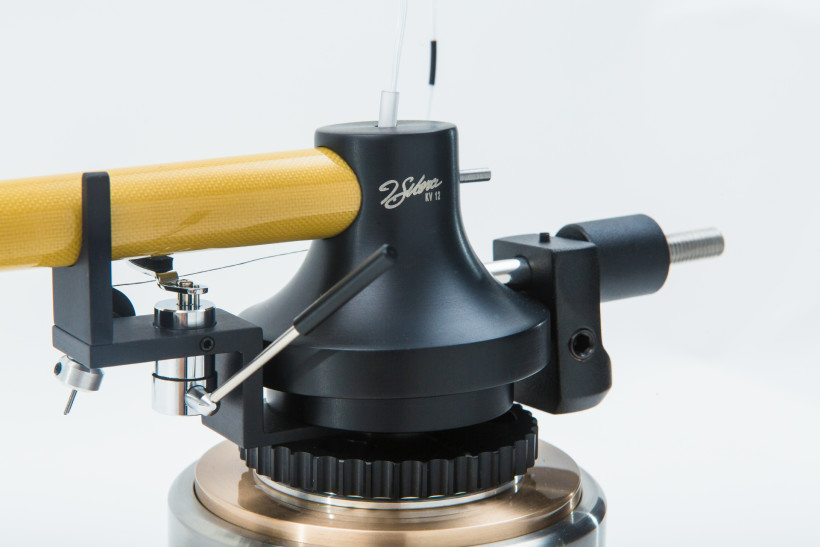
Design
The J.Sikora KV12 is a 12’’ oil-dampened unipivot tonearm with an effective length of 304,8 mm and effective mass of 13g. The make and finish are impeccable. It features a flat, metal headshell with elongated slots that allow user to move a cartridge along while setting it up. Same as in the J.Sikora’s deck, also here designers decided to use a combination of several materials to achieve ultimate performance. The tube is made of Kevlar, and as far as I know it is the first tonearm ever utilizing this material. It is supported by several metal elements made of aluminum, iron cast, bronze and stainless steel. The internal custom mono-crystal silver wiring was custom-made by another renown Polish manufacturer, Albedo. It is a single piece wiring from cartridge pins on one end to RCA connectors on the other. There are two counterweights. A bigger one placed close to pivot point allows user to adjust azimuth (using a single, easily accessible screw that ones screws in or out). And there is another, smaller one – the one that was replaced a week after the arm was installed on my deck. It is a metal cylinder with the threaded hole along its longer axis. Using such alignment allows for super-precise VTF adjustment. In the box one finds another counterweight (smaller or larger depending on which was is installed) which may come handy for lighter or heavier cartridges. There is also an anti-skating with a very small, very light weight on a thread (it’s all that is needed for this arm). Last but not least, there is an element that took a very long time to developed and that is actually the most expensive part of the tonearm – the on-the-fly VTA adjustment. The whole mechanism is complex, extremely precise and hard to make, but the ultimate result is stunning. There is a large wheel placed horizontally on the tonearm’s column that one just turns one way or the other even during playback. It works flawlessly and precisely, operating it is super easy and, to be honest, fun. The whole tonearm setup process was pretty straightforward and it didn’t take much time. After that I was ready to find out how good the J.Sikora KV12 Tonearm actually was.
Sound
The Schroeder CB tonearm that I have been using ever since I bought my J.Sikora Standard Max deck is a truly great performer that I grew to like and appreciate a lot over the years. Two years ago I had a chance to review the Acoustical Systems Aquilar tonearm installed on my deck. It did deliver significantly better performance than Schroeder but it was almost twice as pricey. The new J.Sikora tonearm without VTA costs a little more then my previous arm, so it’s more or less the same price level. Therefore price-wise I should have expected something rather from Schroeder’s performance level but what I heard from the very first record proved that it is not the price that really decides the performance.
Even though I had a chance to be wowed for a few days by the prototype, I decided to treat the final product that came for a review as a totally new case. I had to wait quite some time for the opportunity to listen to the final version of the J.Sikora KV12 so when it finally arrived I couldn’t wait to listen to it. After all, we audiophiles and music lovers tend to act like kids who are really happy about their new toys, don’t we? I couldn’t decide which album I should listen to first, as I wanted to listen to them all (or at least to my favorite 50 or so ones). I finally went with the other analogue sensation of the last Audio Video Show in Warsaw (the first one, as mentioned before, being the KV12). If you were there maybe you had a chance to visit one of Soundclub’s room. This company is a Polish distributor of such brands as Brinkmann, Marten, Soulution, Tenor Audio, Boulder and others. One of the guest there was Matthias Lück from Brinkmann who brought with him a very special and rare gift for visitors. Namely, a chance to listen to a copper copy of the „Special 33” album by Blicher Hemmer and Gadd. It was recorded as a special edition for the Brinkmann’s 33rd anniversary and was supposed to be released some time later. The sound of this copper matrix (as that’s what it was) was simply remarkable, maybe the very best I’d ever heard from an analogue (although not vinyl) record. I called it a gift on Matthias side, because it is not every day that so many people have a chance to listen to an album played from a matrix (that can’t even be played too many times). Those who were there would probably agree that it was a very special experience.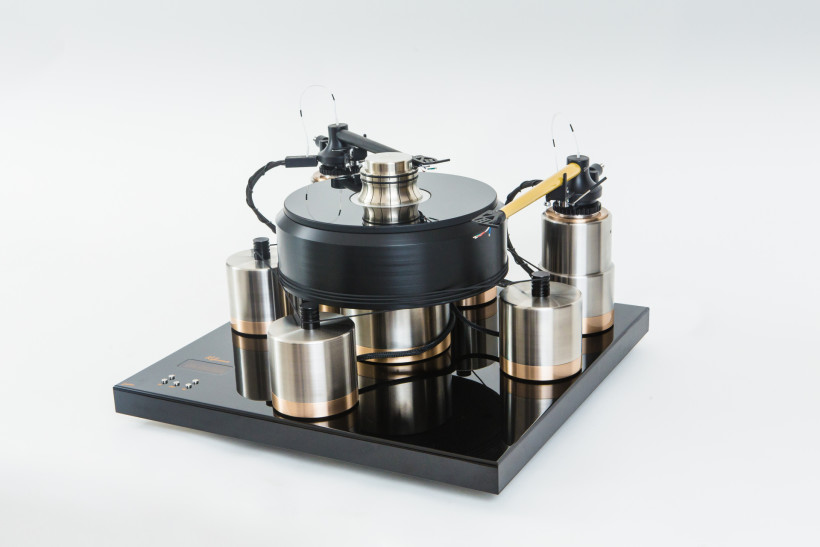 I remember, a few years back in Munich, during the High End Show, Dirk Sommer presented differences between sound quality of a tape he recorded and a vinyl record that was later made of it. The tape sounded so much better that for some time after that experience I listened to every vinyl records wondering how much of recording’s original quality was lost even with the best pressings. The copper matrix wasn’t probably as good as the original tape with this material could be, but it was definitely way better then even best vinyl releases. Maybe two months ago, having a chance to, at least partially, forget the remarkable sound of the said matrix, I bought a copy of this limited edition (on vinyl obviously). That’s a two-record release on 140g vinyl (as Mr. Brinkmann believes it’s an optimal one, better than 180 and 200g). And it sounds incredibly well as I learned already using my J.Sikora still with Schroeder tonearm and AirTight cartridge. Now, I needed to know if and how much closer the KV12 could bring me to my memory of the aforementioned presentation so I cued the first side in.
I remember, a few years back in Munich, during the High End Show, Dirk Sommer presented differences between sound quality of a tape he recorded and a vinyl record that was later made of it. The tape sounded so much better that for some time after that experience I listened to every vinyl records wondering how much of recording’s original quality was lost even with the best pressings. The copper matrix wasn’t probably as good as the original tape with this material could be, but it was definitely way better then even best vinyl releases. Maybe two months ago, having a chance to, at least partially, forget the remarkable sound of the said matrix, I bought a copy of this limited edition (on vinyl obviously). That’s a two-record release on 140g vinyl (as Mr. Brinkmann believes it’s an optimal one, better than 180 and 200g). And it sounds incredibly well as I learned already using my J.Sikora still with Schroeder tonearm and AirTight cartridge. Now, I needed to know if and how much closer the KV12 could bring me to my memory of the aforementioned presentation so I cued the first side in.
I can’t honestly say that it was exactly the same experience, after all neither setup nor the record was the same. Yet, the memories came back to me immediately. The same uniquely intense, lively, present sound. So realistic in terms of both, spacial presentation and tonal accuracy. The drums solo was as impressive as I remembered it due to perfect timing, fast leading edge, the fact how tight the bass was but also how vibrant, open and crisp the cymbals sounded. The saxophone had this amazing depth to it, so much air around it, such a wonderful flow. The Hammond’s tone was unmistakably beautiful too. On top of all that there was a very nice feeling of the space surrounding musicians, ambiance if you will, quite coherent across the album despite the fact that recordings took place in a few venues. I loved this album with Schroeder too, but with J.Sikora KV12 it just got even more real, it was more about me being there, listening to live performance, and less about the album being played in my room. Even though it is not particularly bass-rich performance, I mean the drummer does his job well, but apart from his solos he is not, nor tries to be a frontman. Still, the fact how clearly defined, how tight and yet juicy each stick’s stroke was, definitely attracted my attention as one of the key differences compared to the German tonearm.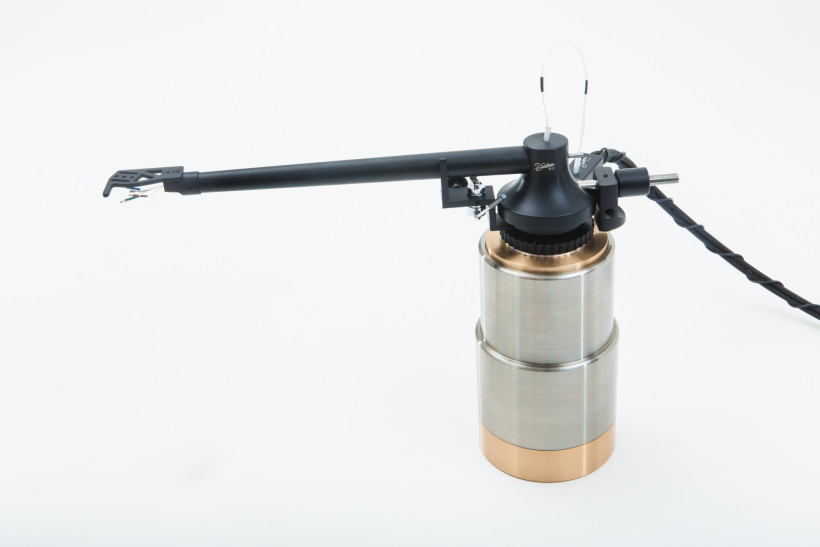 After this album I did not hesitate choosing the next one – I just had to cue in „The Red hot” by Ray Brown’s Trio to listen to his double bass (and Gene Harris’ piano too, obviously). This double, 45 r.p.m. release of classic Concord Records album keeps amazing me with both, the liveliness of the performance of outstanding musicians and recording/release quality (and the laughing lady in the first row who always manages to make me smile). The reviewed tonearm wonderfully conveyed both, the moments when maestro’s bass was so colorful, sounded so deep and powerful, with so much wood, and when it momentarily turned into this so gentle, quiet instrument with almost no wood, just strings. The dynamic and tonal range of this instrument were also perfectly presented with the J.Sikora KV12. It seemed as if it had even larger and heavier body, although within realistic boundaries. The attack phase was better defined and faster with the Polish arm and the decay longer, but again, realistic. The key difference though, was a better differentiation in terms of both, timbre and dynamics especially on micro level. The reviewed tonearm was able to retrieve even more tiniest details from the record’s groove, as if the resolution had increased thus making the listening session a more real, more hands on experience. I might have cued in this album to listen primarily to Ray Brown’s bass, but Gene Harris’ performance was in no way inferior. His piano sounded so accurate, so lively, so full-bodied as with no other tonearm before. The notes were clearly defined, the decay perfect, there was so much energy in the sound including the lowest notes. Same as with the double bass, there was this sensation of witnessing a performance of a big and powerful instrument played by a true master musician.
After this album I did not hesitate choosing the next one – I just had to cue in „The Red hot” by Ray Brown’s Trio to listen to his double bass (and Gene Harris’ piano too, obviously). This double, 45 r.p.m. release of classic Concord Records album keeps amazing me with both, the liveliness of the performance of outstanding musicians and recording/release quality (and the laughing lady in the first row who always manages to make me smile). The reviewed tonearm wonderfully conveyed both, the moments when maestro’s bass was so colorful, sounded so deep and powerful, with so much wood, and when it momentarily turned into this so gentle, quiet instrument with almost no wood, just strings. The dynamic and tonal range of this instrument were also perfectly presented with the J.Sikora KV12. It seemed as if it had even larger and heavier body, although within realistic boundaries. The attack phase was better defined and faster with the Polish arm and the decay longer, but again, realistic. The key difference though, was a better differentiation in terms of both, timbre and dynamics especially on micro level. The reviewed tonearm was able to retrieve even more tiniest details from the record’s groove, as if the resolution had increased thus making the listening session a more real, more hands on experience. I might have cued in this album to listen primarily to Ray Brown’s bass, but Gene Harris’ performance was in no way inferior. His piano sounded so accurate, so lively, so full-bodied as with no other tonearm before. The notes were clearly defined, the decay perfect, there was so much energy in the sound including the lowest notes. Same as with the double bass, there was this sensation of witnessing a performance of a big and powerful instrument played by a true master musician.
The next album I wanted to listen to was the latest release by Rodrigo y Gabriela, a fantastic guitar duo from Mexico. Somehow instead of their last album I picked up their first from the shelf. Being a lazy guy I just cued it in, choosing the second disc with live performance (to continue the live recordings streak). The quality of this release is not quite up to the highest audiophile standards, and so it was a chance to test J.Sikora KV12 in terms of its ability to differentiate recordings. There was no doubt from the very first moment, that the reviewed arm was not a particularly forgiving one. I could clearly hear a somewhat flattened dynamics, the sound wasn’t also as open and airy as it should have been (if recorded properly), and the energy level of the performance was nowhere near the one I remembered from Rodrigo and Gabriela’s concert (not the recorded one, though). Having said that, I must admit that I simply had a lot of fun listening to what these two amazing musicians could do with their guitars as well as how vigorously the fans responded to the performance. The dynamics, although flattened, was still impressive, the intensity of the performance, the musician’s technique, the flaw of music – all these elements made it an engaging and highly enjoyable experience. Same element kept catching my attention – how accurately all the fast elements were played, whether a single string pluck, or a chord, or a tap on guitars body. That’s how they play it live and that’s how J.Sikora’s arm was able to reproduce it. So while the KV12 might not be forgiving and it will point out any and every weakness of the played record it will still allow you to have fun if the music and performance are good.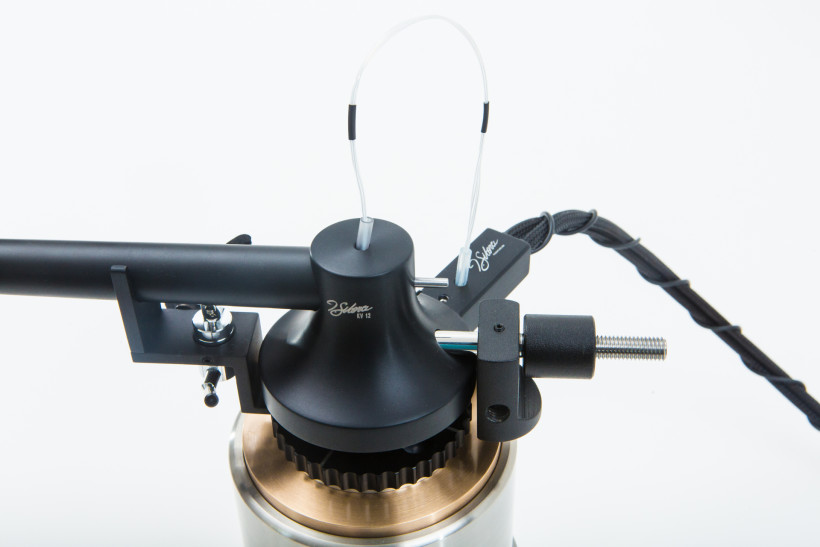 So far I’ve been writing about listening to live albums without really discussing few quite important sonic features that decide whether or not such recordings sound right – spacing, imaging, ambiance, reverbs and so on play an important role in it. I believe these are all strengths of unipivot arms in general and the KV12 is no different in this regard. It simply (it’s actually not that simple for some other tonearms) does it right. It read all the acoustic cues and reproduced right-size, multi-layer soundstages with all elements being placed exactly where they belonged. Small clubs (say in “The red hot”) felt fairly small and crowded, each with its unique ambiance. Whenever the event took place in a much bigger space (say on the Michel Godard’s “Live in Noirlac”), it opened way beyond the walls of my room. I could “see” the space, breath the air, follow sound reflection on the walls far away in the distance. The imaging was also pinpoint – accurate, palpable (whenever applicable, as not all recordings are like that) and three-dimensional. All that mounted up to a very special experience, one that in many cases made me feel like a participant of the live event, not just someone listening to a recording.
So far I’ve been writing about listening to live albums without really discussing few quite important sonic features that decide whether or not such recordings sound right – spacing, imaging, ambiance, reverbs and so on play an important role in it. I believe these are all strengths of unipivot arms in general and the KV12 is no different in this regard. It simply (it’s actually not that simple for some other tonearms) does it right. It read all the acoustic cues and reproduced right-size, multi-layer soundstages with all elements being placed exactly where they belonged. Small clubs (say in “The red hot”) felt fairly small and crowded, each with its unique ambiance. Whenever the event took place in a much bigger space (say on the Michel Godard’s “Live in Noirlac”), it opened way beyond the walls of my room. I could “see” the space, breath the air, follow sound reflection on the walls far away in the distance. The imaging was also pinpoint – accurate, palpable (whenever applicable, as not all recordings are like that) and three-dimensional. All that mounted up to a very special experience, one that in many cases made me feel like a participant of the live event, not just someone listening to a recording.
A change of pace – the Jarek Śmietana’s “A story of Polish jazz” album released by AC Records opens with a rap-funk-jazz track with a nice beat, fast pace, and lots of energy in it. It is one of the J.Sikora’s KV12 fortes – it’s ability to convey incredible levels of energy with live-like immediacy. As I mentioned probably many times in my reviews before, it is one of the key differences between live music and one that is played from a recording (medium doesn’t matter). When listening to live performance you can not only hear but also feel the energy being an inherent part of sounds played by instruments and hence of the music. The very best audio components and systems are able to recreate a similar, although obviously not quite equal, level of energy in the sound and the Polish Kevlar tonearm turned out to be one of them. You can simply feel it in your bones, the energy I mean, in every string pluck, every drumstick stroke, every piano chord. Combined with aforementioned fantastic spacing and imaging it creates very realistic, dynamic, convincing musical spectacles, ones that allow you to forget you’re only sitting in your room listening to a recording. With an even more powerful performance from the Stick Men’s “Prog Noir” this ability to reproduce almost live-like levels of energy became even more obvious. It also proved that the KV12 was able to dive really deep into the lowest bass notes, not only retrieving tones of energy from there, but also low level details, hence excelling in bass differentiation like no other arm I know. To push it even harder on the power and drive side I cued the “Live” by AC/DC. Definitely not an audiophile recording, but so much fun when played in such a powerful yet effortless way, with great PRAT and rich, fleshy midrange that allowed Angus’ guitar and Brian’s voice to truly shine. I pushed the volume level high up with no side effects from the turntable, with cartridge surely following the groove no matter what.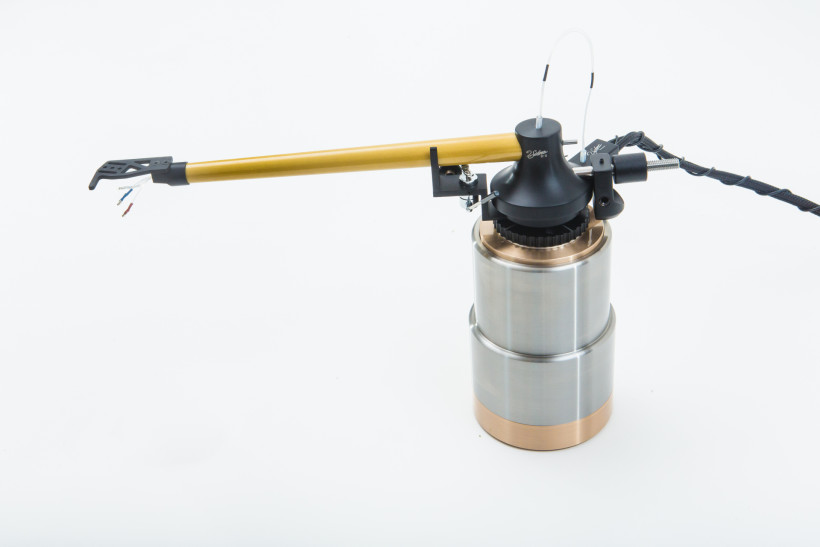 There was one last unturned rock (in terms of nitpicking for any soft spots of this incredible tonearm), the ultimate test – classical music. Well, I’ve already mentioned the Michel Godard’s take on Monteverdi, that sounded absolutely remarkably. Not only because the space of Noirlac Abbey was so convincingly reproduced, but also because of the such a convincing, natural, organic sound of all instruments, not to mention the absolutely sensational singing by Gavino Murgia. Supported by the AirTight PC3 the J.Sikora KV12 retrieved every last piece of information so skillfully recorded and transferred to the vinyl record by Dirk Sommer and Birgit Hammer-Sommer to create a breathtaking experience. Listening to many of my favorite operas was an equally touching experience. Not only was the KV12 able to reproduce them with proper scale and momentum, spacing and imaging, but also in a remarkably expressive way. It’s the emotions that make operas so incredibly beautiful experiences. The reviewed tonearm did and outstanding job not only reproducing the recordings, retrieving all the sounds, all the details from them, the music and voices but also, maybe even most importantly, by making the performance as much musical as theatrical. And it all felt so effortless that I was able to listen to three full operas in a row And still crave for more.
There was one last unturned rock (in terms of nitpicking for any soft spots of this incredible tonearm), the ultimate test – classical music. Well, I’ve already mentioned the Michel Godard’s take on Monteverdi, that sounded absolutely remarkably. Not only because the space of Noirlac Abbey was so convincingly reproduced, but also because of the such a convincing, natural, organic sound of all instruments, not to mention the absolutely sensational singing by Gavino Murgia. Supported by the AirTight PC3 the J.Sikora KV12 retrieved every last piece of information so skillfully recorded and transferred to the vinyl record by Dirk Sommer and Birgit Hammer-Sommer to create a breathtaking experience. Listening to many of my favorite operas was an equally touching experience. Not only was the KV12 able to reproduce them with proper scale and momentum, spacing and imaging, but also in a remarkably expressive way. It’s the emotions that make operas so incredibly beautiful experiences. The reviewed tonearm did and outstanding job not only reproducing the recordings, retrieving all the sounds, all the details from them, the music and voices but also, maybe even most importantly, by making the performance as much musical as theatrical. And it all felt so effortless that I was able to listen to three full operas in a row And still crave for more.
The last part of the test was unexpected. I received the DS Audio E1 set for another review – an entry level optical cartridge with a matching phonostage. Both combined still cost less than just my AirTight cartridge, but it still seemed a good idea to test the J.Sikora KV12 with a different pickup. This one, as it turned out, is much lighter, so I had to replace a counterweight for a smaller one. It’s a good thing manufacturer thought about giving user this option. Obviously the DS set was completely unknown to me and I had no idea what to expect. What it offered was even spacier, more open sound, also very smooth and coherent across the board. Maybe slightly less resolving, not as good as retrieving the tiniest details of my favorite records, with a bit less slam in the lowest bass, but still an impressive performer and for the price simply amazing if not unmatched. The music had this incredible flow and energy, previously presented also with my PC3. The PRAT was impressive, so while the E1 was an outstanding performer particularly in acoustic and vocal music, when it came to rock and electric blues with the muscular yet refined support of the J.Sikora KV12 it did a great job too. A way better one that one could expect from a cartridge/phono set at this price level.
Summary
I suspected as much already after my first listening session during the Audio Video Show in Warsaw, and spending few days with the prototype in my room confirmed it – the KV12 is an excellent performer. Yet, I was still wowed by the absolutely outstanding performance of the final version of the J.Sikora tonearm. I replaced one remarkable performer (Schroeder CB) with another, that was not that much more expensive, yet its positive impact on the performance of my system was huge. The Polish arm turned out to be more resolving, more dynamic, more accurate. It delivered better timing, more immediate and clearer attack phase and longer decay. It turned listening to almost every record into an engaging, truly soul-touching experience. Whether it was a classical jazz trio, rock band, or orchestra, the KV12 was able to convey the almost live-like energy of music, even the tiniest details captured in the recording, and also the wealth of emotions hidden between the notes. Long story short – the J.Sikora KV 12 Kevlar tonearm took my whole system to yet another level allowing me to enjoy my beloved music even more, in a more convincing, engaging, visceral, tangible way. And it did it better than any tonearm before it. Those who love beautiful objects will also appreciate the design, make and finish that are of absolutely top quality. The KV12 not only fully deserves our Victor Award, but I also plan to keep it in my system – it’s just way too good to let it go.
Technical specification (according to manufacturer):
- Type: Unipivot
- KV12 mass: 890g (+ 140g armboard)
- KV12 VTA version mass: 890g (+ 225 g VTA)
- Effective length: 304,8 mm
- Pivot to spindle distance: 291 mm
- Effective mass: 13 g
- Basic color: yellow, optional finish: black
Price (when reviewed):
- J.Sikora KV12: 6.000 EUR with VTA
- J.Sikora KV12: 4.500 EUR w/o VTA
Manufacturer: J.SIKORA


